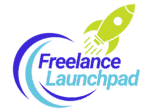You’ve mastered the art of the compelling freelance bio, articulating your transferable skills and passion with newfound confidence. But now, a new question looms large for many aspiring freelancers: “Okay, I’ve told them what I can do, but how do I show them, especially when my ‘professional’ portfolio is… well, empty?”
This is a common and entirely valid concern. The paradox is real: you need clients to build a portfolio, but you need a portfolio to land clients. It’s a classic chicken-and-egg scenario that can feel paralyzing.
However, the truth is, every successful freelancer started with an empty portfolio. The key lies not in having a long list of paid clients from day one, but in understanding how to strategically showcase your capabilities, unique style, and problem-solving prowess through various forms of work – even if they’re personal projects, pro bono contributions, or carefully crafted mock-ups.

Your portfolio is more than just a collection of pretty pictures or well-written words; it’s a visual testament to your skills, your creativity, and your professional potential. In a world where first impressions are largely digital, your portfolio serves as your most powerful sales tool, speaking volumes long before you ever exchange a single email. This comprehensive guide will demystify the process, demonstrating how to build a robust and compelling portfolio that attracts your ideal clients and helps you stand out in a crowded marketplace.
The Client’s Lens: What Are They Really Looking For?
Before we dive into what to put in your portfolio, let’s flip the script and consider it from the client’s perspective. What are they hoping to find when they click on your portfolio link?
- Proof of Skill and Competence: Can you actually do what you claim in your bio? Your portfolio provides tangible evidence.
- Problem-Solving Ability: Clients don’t just buy services; they buy solutions to their problems. Does your work demonstrate an understanding of challenges and effective ways to overcome them?
- Unique Style and Voice: Beyond basic competence, does your work have a distinct flair or approach that aligns with their brand or vision? This is crucial for long-term fit.
- Attention to Detail & Professionalism: Is the portfolio itself well-organized, easy to navigate, and error-free? This reflects on your overall professionalism.
- Understanding of Their Needs (Implied): While your bio states who you help, your portfolio can subtly reinforce this by showcasing work relevant to their industry or type of project.
- Reliability & Consistency: A coherent portfolio suggests you can consistently deliver quality work.
“Success is not final, failure is not fatal: it is the courage to continue that counts.”
– Winston Churchill
According to a survey by Clutch, 77% of small businesses consider a company’s portfolio an “extremely” or “very” important factor when choosing a service provider. (Source: Clutch, “How Small Businesses Choose Software and Services,” 2023 Report). This underscores the absolute necessity of a well-curated portfolio.
The “No Experience” Myth, Revisited: Every Project Counts
The idea that only paid client work counts for a portfolio is a harmful fallacy. As a beginner, your strategy shifts from quantity of past clients to quality and relevance of demonstrated work. Here’s how to build a powerful portfolio from scratch:
1. Personal Projects: Your Creative Sandbox
This is arguably the most powerful and accessible way to build your initial portfolio. Personal projects are entirely within your control, allowing you to:
- Showcase Your Ideal Work: Create pieces that align with the type of client and projects you want to attract, not just what you can get.
- Experiment and Innovate: Push your creative boundaries without client constraints.
- Demonstrate Initiative & Passion: Clients see your drive and dedication.
Examples of Personal Projects by Niche:
- Writers:
- Start a Niche Blog: Write consistent, high-quality articles on a topic you’re passionate about, demonstrating research, SEO understanding, and a unique voice.
- Create Sample Website Copy: Design a hypothetical website for a fictional business (e.g., a local bakery, a sustainable fashion brand) and write all the essential pages (Homepage, About Us, Services, Contact).
- Develop a Content Strategy: Outline a 3-month content plan for a real or imaginary business, including keyword research, topic ideas, and suggested formats.
- Write Ebook Chapters/Lead Magnets: Demonstrate your ability to create valuable, longer-form content.
- Designers (Graphic, Web, UI/UX):
- Rebrand a Local Business: Take an existing local business with dated branding and create a full rebrand concept: logo, color palette, typography, mock-ups for business cards, website, social media.
- Design a Mock App Interface: Identify a common problem and design a user-friendly app interface solution.
- Create a Series of Social Media Graphics: Design engaging graphics for a specific campaign or theme (e.g., environmental awareness, a fictional product launch).
- Develop a Font or Icon Set: Showcase your foundational design skills.
- Virtual Assistants/Organizers:
- Create a Sample Marketing Calendar: Design a detailed social media content calendar for a hypothetical client for a month.
- Develop an Onboarding Workflow: Outline a streamlined client onboarding process using tools like Asana or Trello.
- Design a Presentation Deck: Create a professional presentation on a topic relevant to small business efficiency.
- Build a Sample Data Entry Spreadsheet: Demonstrate organization and attention to detail with realistic data.
- Photographers/Videographers:
- Themed Photo Series: Develop a conceptual photo series (e.g., “Urban Decay,” “Everyday Heroes,” “Hidden Gems of My City”).
- “Day in the Life” Video: Create a short documentary-style video about a local artisan or a community event.
- Product Photography Mock-ups: Photograph everyday items in a professional, marketing-oriented way.
Key Insight: Treat your personal projects with the same rigor and professionalism as you would a paid client project. Aim for excellence in execution, even if it’s just for you.

This is arguably the most powerful and accessible way to build your initial portfolio. Personal projects are entirely within your control
2. Pro Bono Work: The Win-Win Strategy
As discussed in the previous article, offering your services for free or at a significantly reduced rate to a non-profit, a struggling start-up, or a small community organization can be incredibly strategic.
Benefits:
- Real-World Experience: You gain practical experience working with a “client,” adhering to deadlines, and managing expectations.
- Testimonials and Referrals: A happy pro bono client is a prime source for glowing testimonials and potential referrals. Research by Nielsen indicates that 92% of consumers trust word-of-mouth recommendations from people they know. (Source: Nielsen Global Trust in Advertising Report, 2023). While these may not be from “people they know,” they carry significant weight.
- Portfolio Pieces with a Purpose: These are genuine projects that demonstrate your ability to deliver for a real-world need.
- Networking Opportunities: Pro bono work often opens doors to future paid opportunities within the organization’s network.
How to Find Pro Bono Opportunities:
- Local Non-Profits: Reach out to local charities, animal shelters, or community centers. They often have limited budgets and are thrilled to receive professional help.
- Friends and Family: Does a friend have a side hustle or a small business? Offer your help.
- Online Platforms: Websites like Catchafire.org connect skilled volunteers with non-profits.
Crucial Advice: Even for pro bono work, establish clear expectations, a timeline, and a scope of work. Treat it like a paid gig to ensure professionalism and a successful outcome.
“Business opportunities are like buses, there’s always another one coming.”
Sir Richard Branson



3. Mock-Ups & Hypothetical Projects: Targeted Practice
This strategy involves creating work for imaginary clients or projects, specifically designed to fill gaps in your portfolio or target a particular niche.
When to Use Mock-Ups:
- When you have a very specific type of client or industry you want to attract, but lack relevant examples.
- To demonstrate your versatility or a new skill you’ve acquired.
- To showcase your understanding of current design or content trends.
How to Create Effective Mock-Ups:
- Identify a Gap: Is there a type of project you really want to do (e.g., packaging design for organic food, long-form investigative journalism, social media strategy for tech startups) but haven’t had the chance? Create one.
- Develop a Detailed Brief: Treat it as if a real client gave you a brief. What’s the client’s goal? Their target audience? Their brand voice? The project’s requirements?
- Execute Flawlessly: Apply your best skills and attention to detail.
- Document the Process: Especially for complex projects, show your thought process, research, and iterations. This demonstrates your methodology.
Building Your Portfolio Platform: Where to Host Your Work
Once you have your stellar projects, you need a place to showcase them.
For General Freelancers: LinkedIn (using the “Featured” section), specific industry forums or communities.
Your Own Website/Portfolio Site (Highly Recommended):
- Why: Offers complete control over branding, layout, and content. It establishes you as a serious professional. It’s also an excellent place to host your compelling bio.
- Platforms: WordPress (with portfolio themes), Squarespace, Wix, Webflow. These offer user-friendly interfaces with professional results.
- What to Include:
- Dedicated “Portfolio” or “Work” Section: Clearly visible in your navigation.
- Case Studies (Crucial!): Don’t just show the finished product. For each project, include:
- Project Title & Client (if applicable): Use a pseudonym if needed for pro bono or mock-ups.
- The Challenge/Problem: What was the client trying to achieve or what problem did you set out to solve?
- Your Solution/Approach: Detail your process, the tools you used, and your creative decisions.
- The Outcome/Results: Quantify results if possible (e.g., “Increased blog traffic by X%,” “Improved user engagement by Y%,” “Achieved X aesthetic goal”). Even for personal projects, articulate the intended impact.
- Visuals/Deliverables: High-quality images, screenshots, videos, or downloadable PDFs of the work itself.
- Testimonial (if available): A direct quote from the client.
Pro Tip for Beginners: For each personal or mock project, explicitly state that it’s a “Conceptual Project” or “Personal Study” to maintain transparency. However, frame it positively, highlighting the specific skills it demonstrates.
Online Portfolio Platforms (Complementary):
- For Visual Arts (Design, Photography, Illustration): Behance, Dribbble, ArtStation. These are community-driven platforms where creative professionals share and discover work.
- For Writing: Contently, Clippings.me, Medium (for your blog). These offer clean layouts specifically designed for written content.
Reach out and Share Your Thought’s
Join our Facebook Community
Important Note on Choosing a Platform: Your own website should be your primary hub. The other platforms serve as distribution channels and supplementary showcases.
Showcasing Your Unique Style: Beyond Competence
This is where you move from being just “competent” to being “desirable.” Your unique style, often called your “voice” or “aesthetic,” is what truly differentiates you.
- Consistency is Key: Your portfolio should reflect a cohesive style. If you’re a designer, your color palettes, typography choices, and overall aesthetic should be recognizable across projects. If you’re a writer, your tone, rhythm, and approach to storytelling should be consistent.
- Curate, Don’t Accumulate: Don’t throw every piece of work you’ve ever created into your portfolio. Select only your absolute best work that truly represents the quality and style you want to be known for. Aim for 5-10 strong, diverse pieces initially.
- Highlight Your Process: Especially for beginners, demonstrating how you arrive at a solution is as important as the solution itself. Show sketches, wireframes, mood boards, outlines, and revisions. This offers insight into your thought process and professionalism.
- Inject Your Personality (Where Appropriate): Your unique perspective is part of your style. Let it shine through your project descriptions and even the design of your portfolio site.
- Seek Feedback: Ask trusted peers, mentors, or even potential clients (if you have an informal relationship) to review your portfolio. Do they understand your style? Is it clear what services you offer?
- Evolve Your Style: Your style isn’t static. As you grow, your portfolio should evolve with you. Regularly review and update it to reflect your current capabilities and desired direction.
Common Portfolio Mistakes to Avoid
- Including Too Much: Less is more. Overwhelm leads to disengagement.
- Poor Quality Work: Don’t include anything that isn’t your absolute best. A few strong pieces are better than many mediocre ones.
- Lack of Context: Without case studies or explanations, your work is just pretty pictures or words. Tell the story behind each project.
- Outdated Work: Remove anything that no longer reflects your current skill level or desired niche.
- Grammar and Spelling Errors: This is a professionalism killer, especially for writers, but critical for all freelancers.
- Difficult Navigation: Make it easy for clients to find what they’re looking for. Clear menus, logical categorization.
- No Call to Action: Once they’re impressed, tell them what to do next!
The Portfolio: Your Living, Breathing Sales Asset
Think of your portfolio not as a static document, but as a dynamic, living entity that grows with you. It’s an ongoing project that requires regular attention and refinement.
As you gain your first paid clients, integrate those projects, carefully removing older, less relevant pieces. Always seek permission from clients before showcasing their work publicly, especially for sensitive projects. Many will be happy to oblige, especially if you highlight their success.
Building a compelling portfolio when you’re starting out is an exercise in creativity, strategic thinking, and self-belief. It challenges you to produce high-quality work without the immediate external validation of a client. But it’s precisely this foundational effort that will differentiate you, attract your ideal clients, and ultimately transform your freelancing dreams into a thriving reality.
Your journey to a full portfolio begins now, with every personal project, every pro bono contribution, and every thoughtfully crafted mock-up. Start showcasing your brilliance today.
Your First Steps to Freelance Freedom
